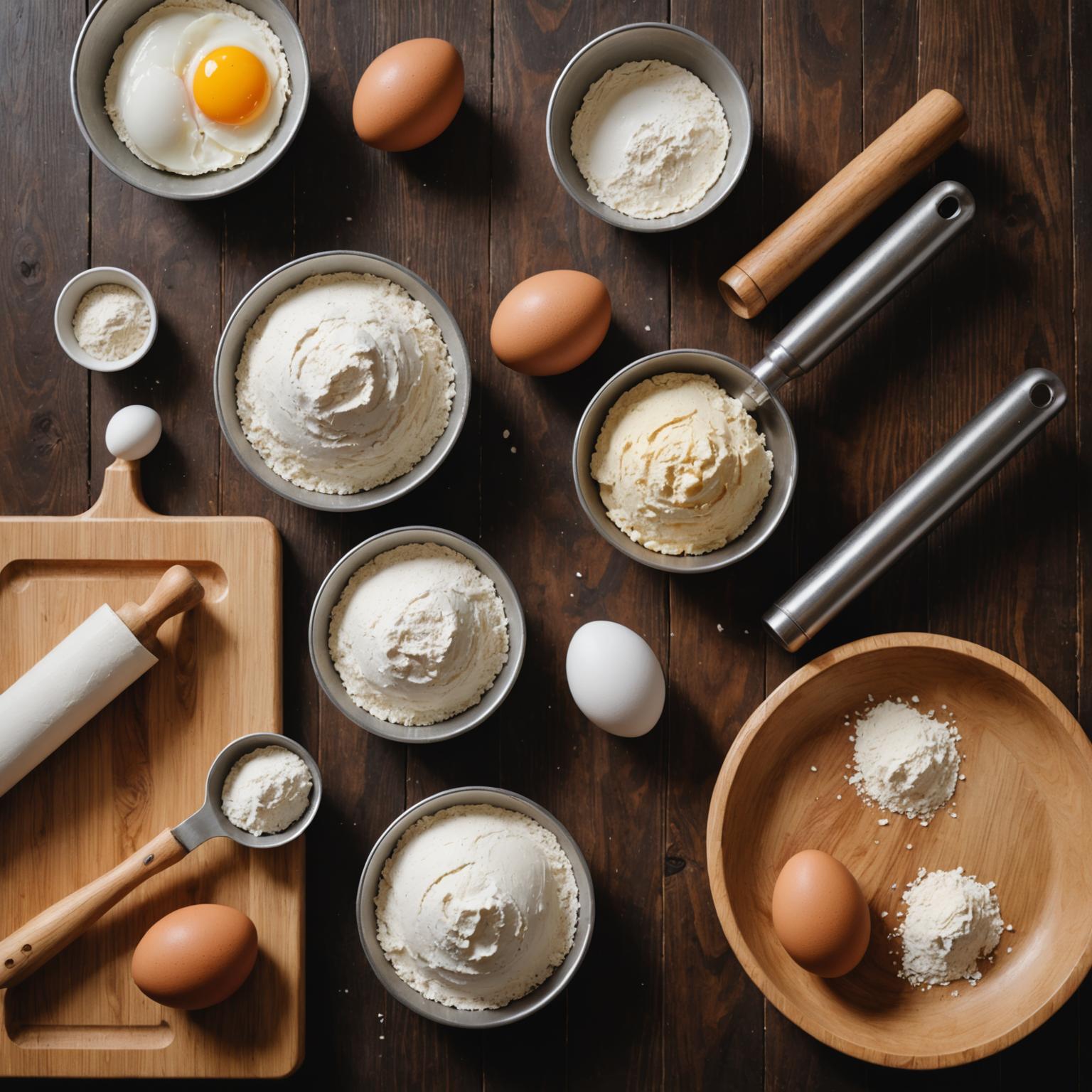In the world of baking, few tools are as fundamental as the rolling pin. It's an extension of the baker's hands, essential for creating everything from flaky pie crusts and delicate pastries to uniform cookie dough and fresh pasta. For generations, the choice was simple, but today's culinary landscape offers a variety of materials, sparking a classic debate: the traditional charm of wood versus the modern efficiency of a Stainless steel rolling pin. While both can accomplish the task, their differences in material, performance, and maintenance can significantly impact your baking experience and final results.
The Timeless Charm of the Wooden Rolling Pin
A Wooden rolling pin often evokes a sense of nostalgia and tradition. Found in countless kitchens for centuries, it has a warm, tactile feel that many bakers find comfortable and familiar. Typically crafted from hardwoods like maple or beech, these rolling pins have a natural grip that feels secure in hand, and they are often available in various styles, including the classic American pin with handles or the sleeker French-style tapered pin. Their weight is generally moderate, providing good feedback as you work the dough. For bakers who appreciate a rustic aesthetic and the connection to age-old baking methods, a quality Wooden rolling pin is an attractive choice. It serves its purpose well for many types of doughs, especially breads and simpler cookie doughs where temperature sensitivity is less of a concern. The porous nature of the wood can even be seen as an advantage by some, as a well-seasoned pin develops a non-stick patina over time with proper care and use.
The Sleek Efficiency of the Stainless Steel Rolling Pin
Entering the kitchen with a modern, professional flair is the Stainless steel rolling pin. Crafted from high-grade, food-safe metal, this tool is designed for precision, hygiene, and durability. Its most significant advantage lies in its non-porous surface. Unlike wood, stainless steel does not absorb moisture, fats, or odors from the dough, which means it won’t transfer flavors between batches of sweet and savory bakes. This makes cleaning incredibly simple and ensures a higher level of food safety, as there are no tiny crevices for bacteria to hide. Another game-changing feature is its temperature conductivity. A Stainless steel rolling pin can be chilled in the refrigerator or freezer before use, and its cool surface helps keep butter-rich doughs for pastries and pies firm and workable, preventing smearing and sticking. This single benefit can be the difference between a flaky, layered croissant and a tough, overworked one. Many modern designs are also weighted to provide consistent pressure with less effort, allowing you to roll out dough to a perfectly even thickness with ease.
Hygiene and Maintenance: A Clear Winner
When it comes to cleaning and long-term care, the two materials are worlds apart. A Wooden rolling pin requires careful maintenance. It must be hand-washed with minimal soap and water, dried immediately to prevent warping or cracking, and periodically treated with food-grade mineral oil to keep the wood from drying out. Putting it in a dishwasher is out of the question, and improper care can lead to a shortened lifespan or a sticky, difficult-to-use tool. In stark contrast, the Stainless steel rolling pin is the epitome of low maintenance. Its non-porous surface can be easily wiped clean, or in most cases, placed directly in the dishwasher for thorough sanitization. It is resistant to rust, cracks, and chips, making it a highly durable, long-term investment for any kitchen. For bakers who prioritize hygiene and convenience, there is no contest.
Performance and Dough Handling
In a head-to-head performance comparison, the ideal choice often depends on the type of dough. For laminated doughs like puff pastry, croissants, and delicate pie crusts, the chilled surface of a metal pin is superior. It keeps the butter cold and solid, which is crucial for creating distinct, flaky layers. The inherent weight of steel also helps in rolling out stiff or large quantities of dough more evenly and with less physical exertion. However, for some softer bread doughs, bakers might prefer the feel of wood, as it is less slick and provides a different type of tactile feedback. The primary drawback of wood, its tendency to stick, requires the baker to use more flour on the dough and the pin itself. While this is a common practice, it can alter the hydration and texture of the final baked good, potentially making it tougher. The non-stick nature of a cool steel pin minimizes the need for extra flour, preserving the integrity of your recipe.
Which Rolling Pin is Right for Your Kitchen?
Ultimately, choosing between a wooden and a stainless steel rolling pin comes down to a baker's personal priorities and baking style. If you are a casual baker who values tradition, enjoys the warm aesthetic of natural materials, and doesn't mind the required upkeep, a well-made Wooden rolling pin can be a cherished tool for years. However, for the serious home baker or anyone who values precision, hygiene, and versatility, the advantages of a Stainless steel rolling pin are undeniable. Its superior performance with temperature-sensitive doughs, effortless cleaning, and professional-grade durability make it a modern workhorse. It is an investment in consistency, cleanliness, and crafting the best possible baked goods with confidence and ease. For those looking to elevate their craft, the sleek, functional, and efficient design of a steel roller is the clear choice for the contemporary kitchen.







